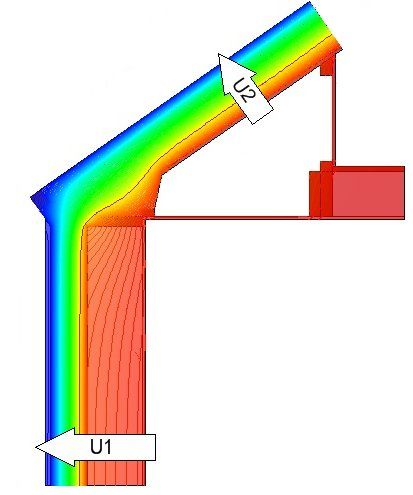Future Homes Standards
The government have recently closed the Future Homes and Building Standards 2023 consultation on 27 March 2024. There have been two consultations into the Future Homes Standard, both of which proposed a draft of measures for new and existing homes. Most of the key takeaways from the recent consultation are in regard to new homes and non-domestic buildings. A small number of sections are also relevant to existing buildings, such as Material Change of Use buildings. The standards will build upon the recently introduced changes to Approved Document Part L 2021. This consultation provides a glimpse into what we can expect from later consultations, regarding the Future Homes Standards to be implemented in 2025.

Why was the Future Homes Standard announced?
The homes of the future in the UK are not just about luxury or aesthetic appeal; they're about sustainability, efficiency, and smart living. As we look towards the future, several key standards are set to define the next generation of UK homes. According to the Climate Change Committee, the built environment accounts for roughly 25% of UK greenhouse gas emissions, 14% of this being from 28 million homes in the UK. By introducing this new standard, the government hopes to ensure that new builds will produce 75-80% less carbon emissions, which will aid in their attempts towards the net-zero target for 2050. The government claims the following opportunities will be created for the UK as a result of the Future Homes Standards: ‘grow skills, build diverse job markets, level up across the country, reduce bills by improving efficiency, tackle fuel poverty, have warmer and better buildings, and ensure our energy system is secure and fit for the future.’ The consultation acknowledges that the changes proposed are likely to increase build costs, but argue the ‘wider benefits to local supply chains for renewable technologies and skill developments for the future’ override the negative effects felt as a result of the increased build costs. Here is an overview of the effects of the standards:
- Energy Efficiency and Sustainability - one of the core aspects of future home standards in the UK is a strong emphasis on energy efficiency and sustainability. Homes will be designed to minimize their energy consumption and carbon footprint. This is likely to involve the integration of and energy-efficient windows and doors. This would prompt a drastic change in the way we build our homes, but also for homes which come into existence through Material Change of Use as they often don’t perform as well as new build in terms of energy efficiency. For domestic buildings, the government is also separately consulting on the new ‘Home Energy Model’ (HEM), which may replace the Standard Assessment Procedure (SAP) for the energy rating of new homes.
- Health and Wellbeing - Homes will be designed with the health and wellbeing of occupants in mind. This includes improved indoor air quality through advanced ventilation systems, natural light optimization with smart glass technology, and the incorporation of green spaces, both indoor and outdoor, to promote mental and physical health. This is already evident in the recent Part O Approved Document 2021, with added changes becoming a possibility; standard homes created through conversions could also require Part O assessments. EV chargers will also be required, which encourages people to use more environmentally friendly modes of transport.
Will gas boilers be banned?
This is very likely. Future Homes Standards will require that all notional buildings have an efficient air source heat pump or a fourth-generation heat network that uses air source heat pumps. The standards will not allow for the installation of fossil fuel boilers while also delivering significant carbon savings, meaning that gas, hybrid heat pumps and hydrogen ready boilers will not be sufficient in meeting the standards.
Governments’ Desired Outcomes:
1. To protect occupants against high energy bills
2. To reduce energy demand of homes and non-domestic buildings by requiring high performing building fabric and building services in new buildings, thereby improving energy security.
3. To reduce total operational carbon emissions and produce buildings which are net-zero ready, by requiring low-carbon heating and increasing general electrification of buildings.
4. Create standards which are simple to understand and use by industry and provide developers with flexibility in meeting consumer preference regarding design, form and operation.
5. To consider peak electricity demand to reduce costs associated with national and local grid infrastructure upgrades.
Implementation timeline
The exact implementation timelines are yet to be confirmed, but the following is predicted:
- Spring 2023 – Consultation on the proposed specification of the Future Homes Standard
- 2024 – Future Homes Standard implementation consultation
- 2025 – Future Homes Standard full implementation
Conclusively, the future home standards in the UK are set to revolutionize how we live, placing a heavy emphasis on sustainability, technology, flexibility, health, and community. If there is anything that you need help with concerning Future Homes Standards, please do not hesitate to give us a call on 01476 870504. Our friendly team will assist you in every possible way.
To know more about the services we provide in helping the UK transition towards Net Zero please visit - https://www.ashbyenergy.co.uk/ or get in touch via email: kamil@ashbyenergy.co.uk, or phone: 01476 870504.
References:
https://www.homebuilding.co.uk/advice/future-homes-standard#section-what-we-know-so-far
Ashby Energy Assessors Blog and News
Contact Us
We will get back to you as soon as possible
Please try again later
Directory
Contact Information
01476 870504
info@ashbyenergy.co.uk
Ashby Energy Assessors Ltd
Head Office
Landrace Lodge
Friars Well Estate
Wartnaby
Melton Mowbray
Leicestershire
LE14 3HQ
All Rights Reserved | Ashby Energy Assessors | Design & Build By Kangaroo UK




